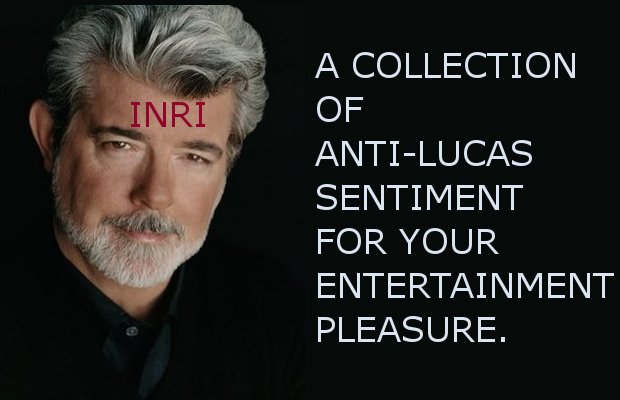By JimK



 (2 votes)
(2 votes)
JimK: 99.95% of the time I come down on the whole “what does it mean?” argument on the side of the creators; If you wrote a thing, or a character, or whatever, you get to decide what it means, what happens to that character, etc. For better or worse that character is yours, and while the fandom may not like what you’ve done, too bad. They don’t get to decide. They don’t even get to say “You can’t do that with _fill in the blank_.”
For that other 0.05%, there’s George fucking Lucas.
So how did a character who wasn’t even supposed to speak English wind up sounding like that? Because George Lucas insisted on it, “Clone Wars” director Dave Filoni confessed.“Zero, Jabba’s uncle, originally spoke in Hutt-ese, like Jabba and then he had a different sluggish voice just like Jabba, and then George one day was watching it and said ‘I want him to sound like Truman Capote.’ He actually said that and we were like ‘Wow!’” Filion revealed. “It’s a hybrid of it but the inspiration is definitely there on Capote. It’s one of those things that takes him from being an interesting character and I think really does put him over the top and does something. He’s a favorite among the crew here.”
Jesus H. Christmas trees and wrapping paper. are you fucking kidding me? Did he learn nothing from the backlash against his “No tickee no washee” Chinese diplomats and the shuckin’ and’ jivin’ “Meesa thinka meesa be a racial stereotype-a, Boss?” Jar-jar abomination? Does this guy actually have any decent creative thoughts anymore? Did he ever? How in the sweet fuck did Star Wars get born out of such a hack? No wonder I like the books and the extended universe so much. he has almost nothing to do with that stuff. I was under the impression he stayed away from the animated stuff as well, but apparently not.
How the fuck does no one tell him what a horrible idea this is? How does no one in that entire god-damned organization have the balls to stand up and say “This is internally inconsistent and horrible, illogical writing? Also, it’s a homophobic stereotype that should be shunned on general principle outside of broad comedy you fucking hack, and I quit?” Is there not one freaking writer in that entire company that gives a shit? Hutts speak Huttese. Once you establish the trope, that’s the rule in your world. Every sci-fi/fantasy writer on the god-damned planet knows that, even the complete hacks. The ones that aren’t total hacks try to follow the rules they create because they know it’s how you keep the reader/viewer immersed in that reality. It’s called not sucking, Lucas. Look into it.
I know I use the idea of someone dying as a rhetorical device quite often, and I really don’t want (most) people to suffer. I especially don’t want to cause harm to the families of those upon whom I wish an end, but Jiminy H. Christ Esquire, why won’t Lucas just have a god-damned heart attack already and re-fucking-tire! He doesn’t have to die, just GET THE FUCK OUT OF THE BUSINESS and let people raised on this shit, who actually understand the beauty and magic of the universe, let them steer the ship for awhile.
George Lucas raped my childhood and he just won’t stop doing it. He has a sickness, and his creations should be taken away from him at once. He is the exception that proves the rule mentioned at the beginning of this post. He should never, ever be allowed to make any decisions regarding anything relating to Star Wars ever again. And also maybe just a bit of pain during the heart attack, and maybe a booming voice that comes out of the sky while he’s clutching he chest that says ‘You disappoint me, Lucas. You’ve ruined everything. Search your feelings, you know it to be true. Jackass.”
I was going to go see Clone Wars. You’d think I would learn after Indiana Jones and the Kingdom of the Crystal Skull, right? I vowed to never pay him money again for a movie, but I was going to do it. I was under the impression that he was only involved with this animated feature in a very limited capacity. I should have known he was micromanaging every aspect of it to as to make it suck ass. Once again I find myself thinking one simple phrase, one that has become so, so common these past eight or nice years, ever since I sat through Phantom Menace:
Fuck George Lucas.
.jpg)


















